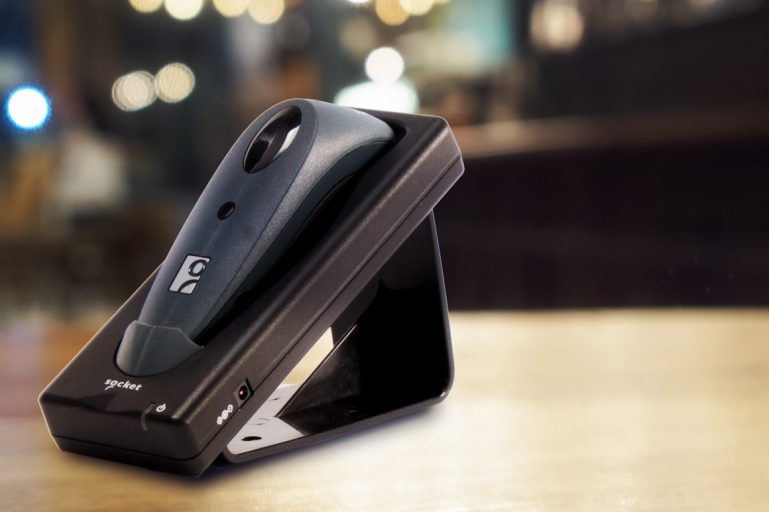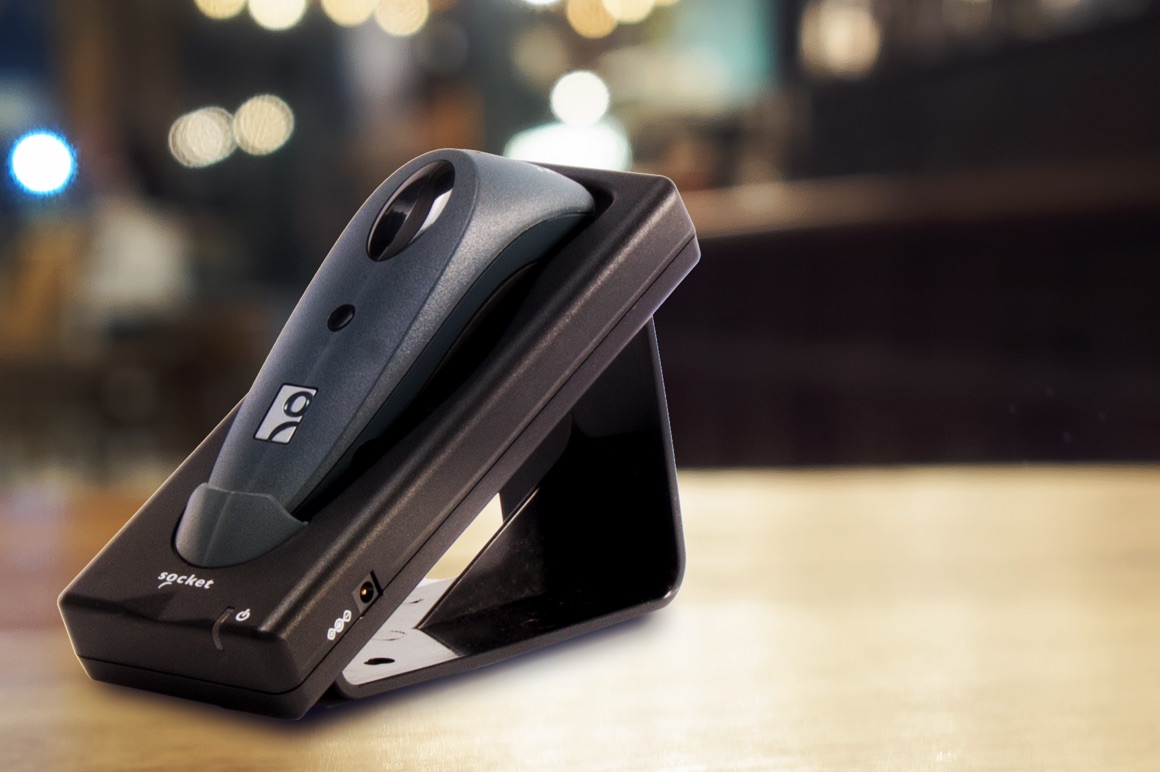
The Definitive Guide to Barcode Scanners for POS Software
A POS barcode scanner is an indispensable component of your point of sale hardware, whether you run a pet shop, wine store or jewelry boutique.
Here’s an overview for what to look for in a great scanner that works with your point of sale software.

Connectivity, Cords, and Power
It’s important to pick a POS barcode scanner with a connectivity and corded/cordless option that matches both your point of sale system and your usage patterns. The most common connectivity options are serial, USB, and Bluetooth. Legacy and Windows-based systems usually connect via serial or USB, whereas modern tablet-based systems more commonly use Bluetooth. You’ll need to make sure you pick a technology that your system supports. Wireless scanners offer many benefits, from reduced counter clutter to the ability to easily scan the barcode on large, difficult-to-maneuver items. All Bluetooth scanners are wireless, and most work up to 30 feet away from the point-of-sale system, which should be plenty of range for the average merchant. Some serial and USB scanners also offer a wireless option, usually through an on-counter docking station, but the wireless range can vary substantially. Wireless scanners use batteries, and you don’t want your scanner to die in the middle of the business day, so look for one with a battery life of at least 10 hours.
1D vs. 2D – What’s the Difference?
Two-dimensional (2D) POS barcode scanners offer more capabilities and better performance than their one-dimensional (1D) counterparts, but it wasn’t always that way. For many years, 1D scanners were the only game in town. They are designed for reading data laid out in one dimension, like a UPC barcode. Recently, manufacturers have brought affordable new 2D scanners to market for the first time. 2D data includes QR codes and other barcodes laid out in squares or rectangles. 2D scanners generally cost more than 1D scanners, but for many merchants, it’s worthwhile to go for a 2D scanner. If you use loyalty programs or support mobile payment applications that utilize 2D barcodes, then you definitely need a 2D scanner. Even if you’re only scanning standard 1D barcodes, 2D scanners often perform better; the optical scanning technology used by many 2D scanners allows them to scan 1D barcodes more quickly and from more angles than a 1D scanner can. If you do decide to stick with a 1D scanner, look for one that uses a laser, as ShopKeep’s lab and field testing has found that those produce significantly more reliable scans than those using other technologies.
Durability
Some POS barcode scanners, including ShopKeep barcode scanners, come in both standard and “durable” varieties, which are designed for rougher environments. Much like the choice in cash drawer varieties faced by restaurateurs, deciding whether you need the upgraded durability for your scanner depends on the nature of your business. Ask yourself a few questions:
- Is my checkout counter a crowded and chaotic space?
- Do items from the counter regularly fall onto the floor?
- Are my employees less diligent and careful than I’d like when handling the point of sale equipment?
- Would my register throughput slow down to an unmanageable halt if my scanner were accidentally damaged and unusable?
If you answered “yes” to one or more of those questions, you should consider going for a durable model. If you answered “yes” to the last question, you should also think about having an extra scanner on hand as a backup. ###Accessories
When selecting a POS barcode scanner, you should evaluate the accessories available to complement it. Do you want one that can be tethered to a lanyard or wrist strap? Do you want a dock or stand that keeps the scanner active in a stationary position for your clerks to ring up items supermarket-style? If so, be sure that the appropriate accessories exist for the scanner before you buy it.
A Scanner in the Hand is Worth…
At the end of the day, there’s no substitute for holding a scanner in your hand and giving it a test drive. That’s the best way to evaluate whether the scanner:
- Feels well-made and fits comfortably in your hand
- Is easy to operate
- Provides audible (sound) and/or tactile (vibration) feedback for a scan
- Matches the look and feel of the rest of your point of sale and countertop accessories (easier to achieve if the scanner is available in multiple colors)
Go visit a fellow business near you and ask to try out what they use, or just go ahead and order one from a store with a generous, no-questions-asked return policy.
Final Word
Good POS barcode scanners can be one of the more expensive peripherals for your point of sale system, but it’s an investment in equipment that you and your employees will use hundreds or even thousands of times each day. It is definitely one of those places where it’s worth paying a little more now to save time, money, and headaches later.
Want to try ShopKeep for yourself?
Just answer a few easy questions.
Need help finding the right point of sale?
Just complete the form. We’ll call you right back to explain how ShopKeep can work for you.
Hit the ground running.Sprinting, in fact!
Read our free, comprehensive guide, Small Business 101, to learn all you need to know about starting a thriving business.

